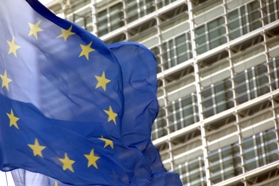Addressing the EU Patent Translation Debate
Brett Gallagher July 5 2011 10:07:40 AM


It has been almost four decades since the Convention on the Grant of European Patents and the establishment of the European Patent Office (EPO). The EPO provides a single patent grant procedure, but not a single patent from the view of enforcement. What this means, then, is that the patents granted are not European Union patents or even Europe-wide patents at all, but rather, just a bundle of national patents.
It is no surprise, then, that the issue of a truly centralized system for handling patents in Europe is still a hot button issue, and one that the EU has been recently struggling to solve. One of the main reasons for both the necessity of a better solution, as well as the heated debate, comes down to translation.
The Cost of Patent Translations in Europe
One of the biggest issues for inventors (and their attorneys) is the enormous cost involved with translating patents into all of the languages of the EU (even though the EPO has only three official languages, English, German and French).
According to European Commission estimates, the average cost to translate a patent for just six countries costs around $4,500 (approximately US $6,300), and up to $26,000 (approximately US $36,300) for translations in all member countries. Due to the costs of translation, as well as annual renewal fees across all countries can lead to the costs being up to 11 times higher than in the United States..
And, when you consider not only the costs to obtain translations in the languages of each member country, but also the annual renewal fees for the patents, the costs can be truly overwhelming for many smaller companies or individual inventors.
Proposal for a Unitary Patent System & Opposition from Italy and Spain
Most of the EU member countries have agreed, in principle, to the need for a unitary patent system in Europe, which would allow for a single intellectual property right in all EU member states. Under such a unitary system, the process would be much cheaper and more efficient than the current system of individual national patents, which then have to be validated and enforced separately in each member state.
In terms of the translation issue, patents would only need to be translated into a few languages, with a heavy focus in English, German and French, rather than into every official EU language, thus saving significantly on translation costs. In addition, with a unitary patent system, there would only be one annual renewal fee, and ownership could be transferred in only one transaction, simplifying the process considerably.
While most member countries have accepted this plan, however, Italy and Spain have blocked passage of the measure, insisting that this would not be fair to the other member countries whose languages are not represented among those few.
Finding a Compromise Solution
After months of wrangling, and with continued opposition from a minority of EU member states, the European Parliament, in mid-February, agreed to a compromise plan, the so-called "enhanced cooperation" procedure. Under this plan, a group of EU countries would be permitted to go ahead with a cooperative agreement amongst themselves, even if all member states did not agree. While this isn't a final solution, and still far from the eventual goal of a truly "unitary" patent system in Europe, it does represent a step in the right direction.
This doesn't mean, however, that the battle is over. It is almost certain that Italy and Spain will continue their opposition, and there have even b een threats to take t he issue to th e European courts. This could potentially ad to years of legal wrangling and uncertainty among the intellectual property rights community in Europe.
In the meantime, translation remains a critical part of the entire patent lifecycle, whether for research purposes, foreign fili ng or litigation. And, while the recent announcement by Google in regards to enhancing its machine translation capabilities based on an agreement with the European Patent Office to add its massive corpus of translated documents into its system will allow some cost savings, at this point, it will not be able to replace certified translations by human translators needed for filing and other "official" purposes.
==================================================================================
About STI, Inc.
STI has been a leading provider in the patent & IP translation industry for more than 30 years, helping numerous government and private sector clients to meet their translation, localization, and interpretation needs. STI integrates the best in human and technological resources to help our clients break down language barriers and face the demands of increasingly rapid globalization. With an effective, personalized, and proven system of project management, there is no project too big or too small.
STI is a Corporate Member of the American Translators Association (ATA) and a Charter Member of the Association of Language Companies (ALC), the only trade association in the U.S. devoted to the language industry. STI's President, Marla Schulman, is the Immediate Past President of the AlC.
STI is located in the Washington D.C metro area. To learn more, please contact STI at www.schreibernet.com, or call (301) 424-7737.
- Comments [63]